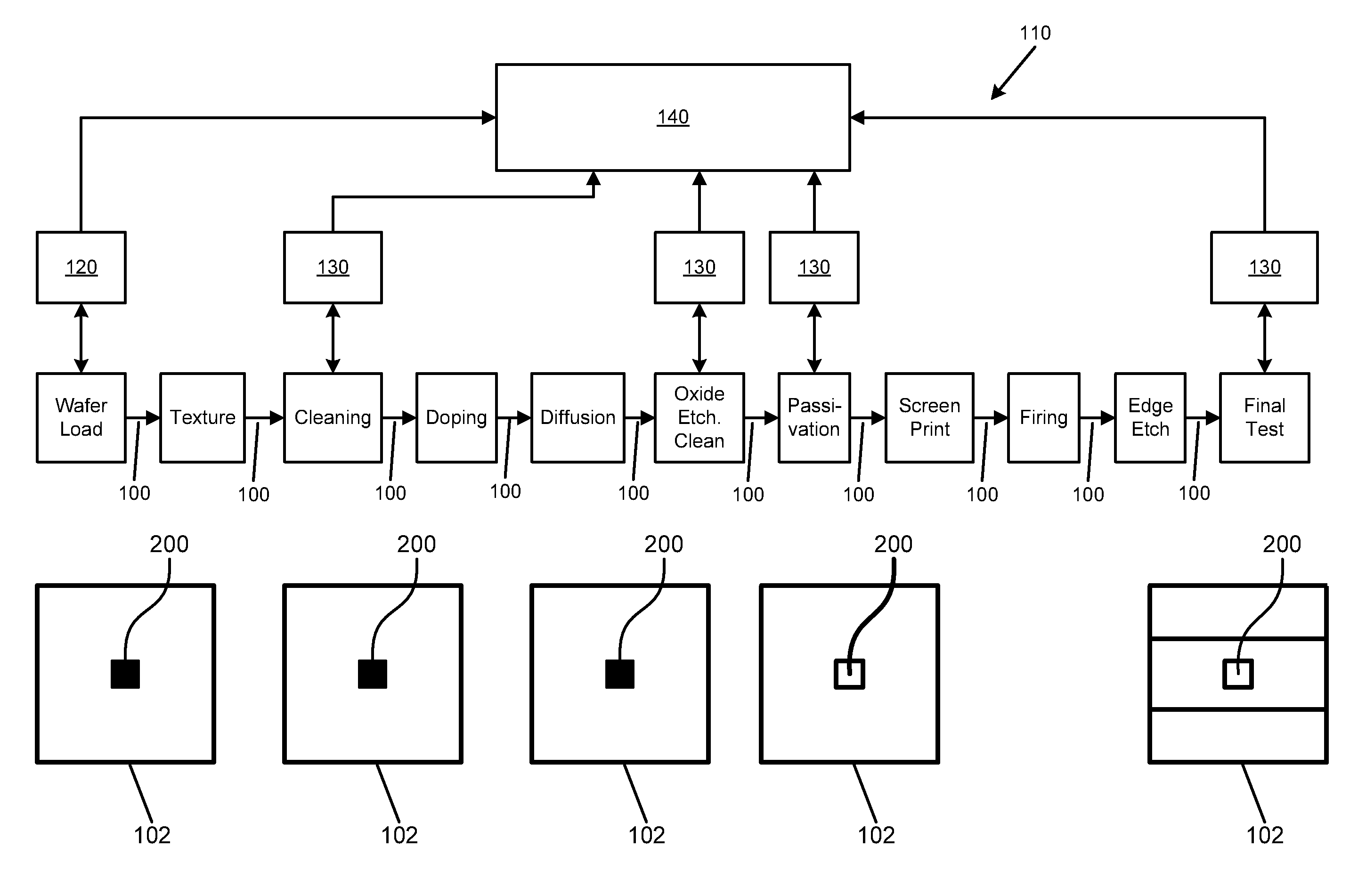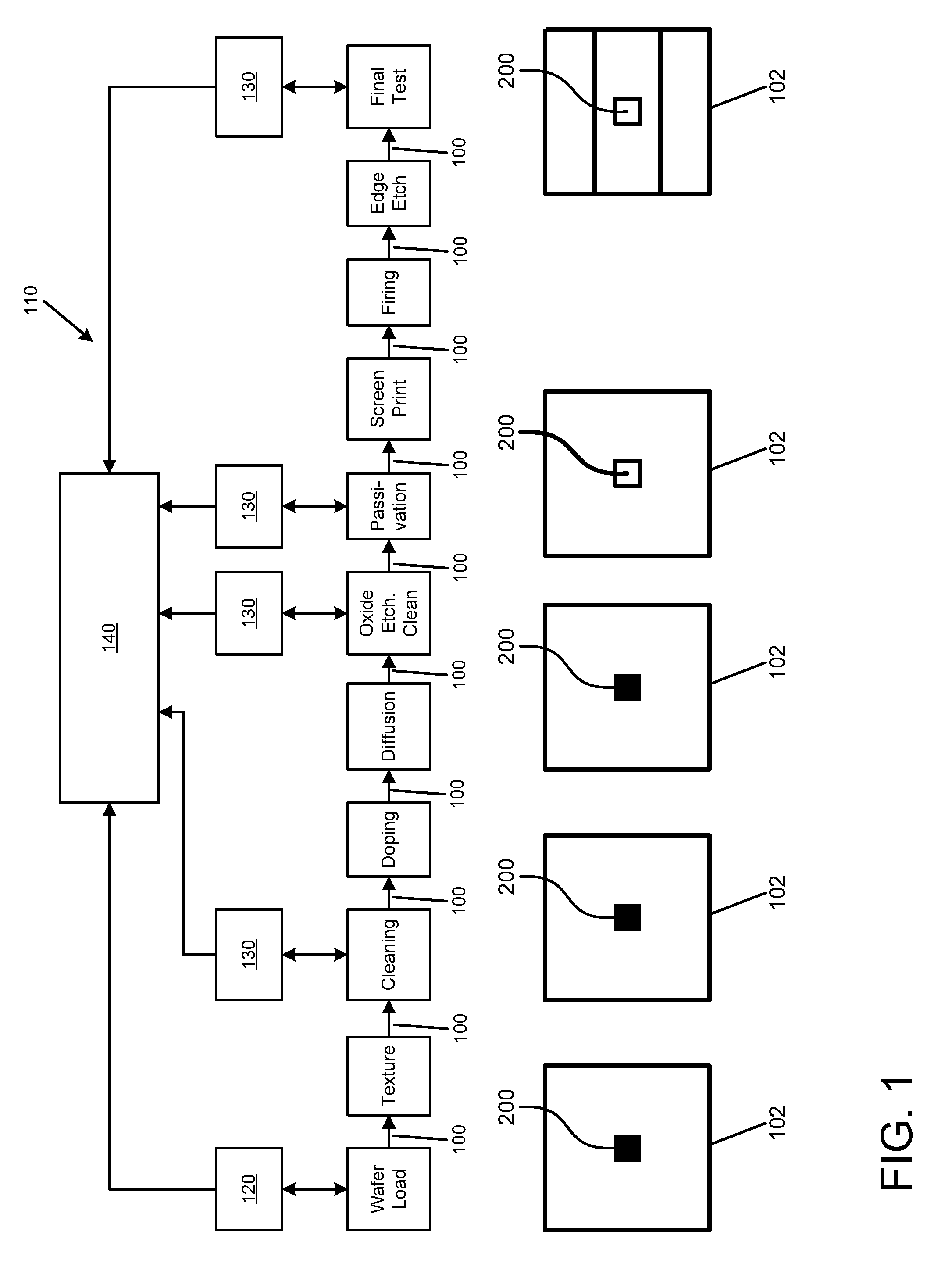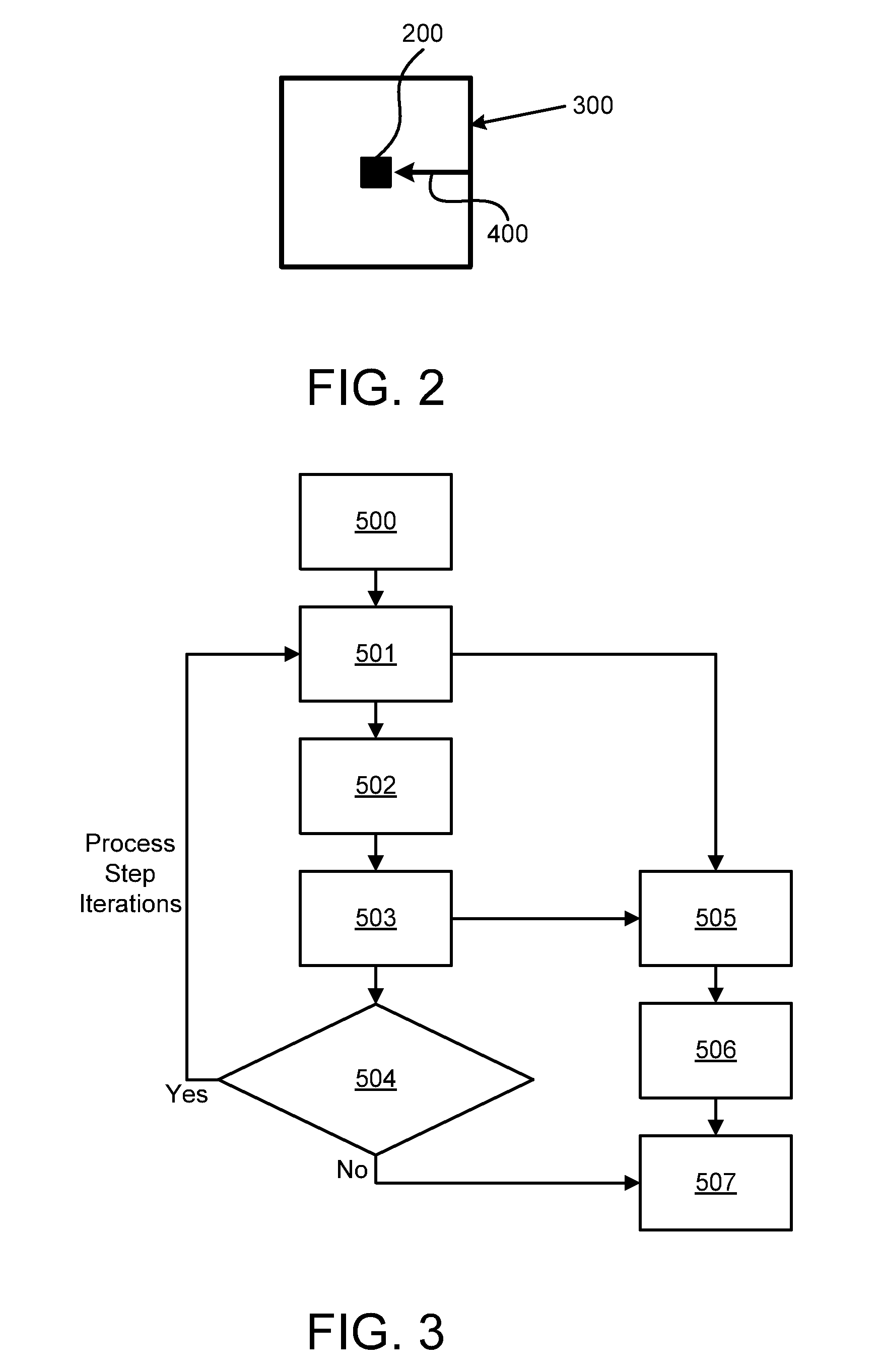Identification and trace of items within an assembly or manufacturing process
a technology of assembly or manufacturing process and identification and trace, which is applied in the direction of program control, total factory control, instruments, etc., can solve the problem of often lost traceability, and achieve the effect of avoiding the risk of mechanical damage to the item
- Summary
- Abstract
- Description
- Claims
- Application Information
AI Technical Summary
Benefits of technology
Problems solved by technology
Method used
Image
Examples
Embodiment Construction
[0054]Referring now to FIG. 1, in a production line 110 for the production of solar wafer cells 102 for photovoltaic applications, a center spot 200 of a solar wafer 102 is subject to an initial surface profile scan by a first means 120 for reading a first surface profile. In this embodiment, the first means 120 is a laser surface scanner. The solar wafer 102 is loaded onto a conveying means 100 of the production line 110 by which the solar wafer 102 is conveyed through the production line form one treatment step to the other. After texturing and cleaning, the center spot 200 of the item 102 is scanned by means 130 for reading a second surface profile of the item, which means 130 is a laser surface scanner, too. After the subsequent treatment steps of doping, diffusion, and oxide etching / cleaning, the center spot 200 is scanned again to provide a third surface profile of the item 102. The same is done after the passivation step. Then, after a screen printing, firing, edge etching, a...
PUM
 Login to View More
Login to View More Abstract
Description
Claims
Application Information
 Login to View More
Login to View More - R&D
- Intellectual Property
- Life Sciences
- Materials
- Tech Scout
- Unparalleled Data Quality
- Higher Quality Content
- 60% Fewer Hallucinations
Browse by: Latest US Patents, China's latest patents, Technical Efficacy Thesaurus, Application Domain, Technology Topic, Popular Technical Reports.
© 2025 PatSnap. All rights reserved.Legal|Privacy policy|Modern Slavery Act Transparency Statement|Sitemap|About US| Contact US: help@patsnap.com



